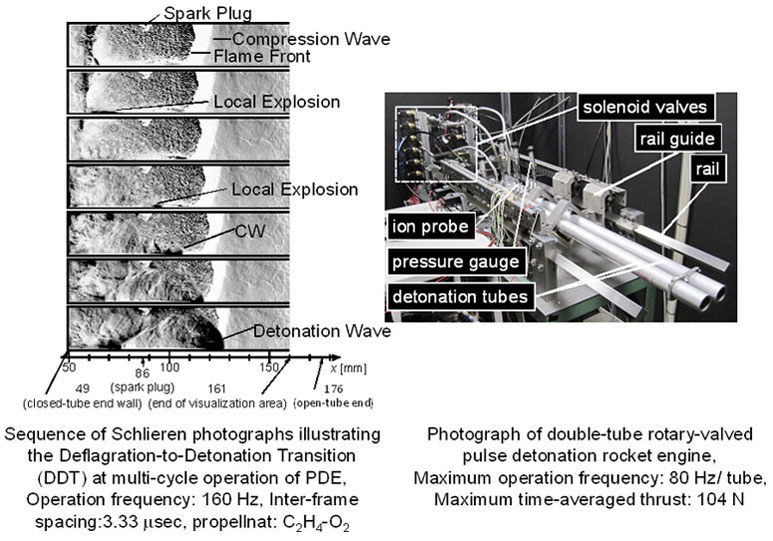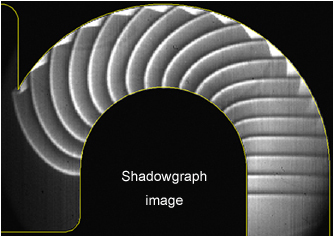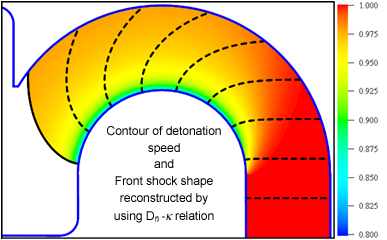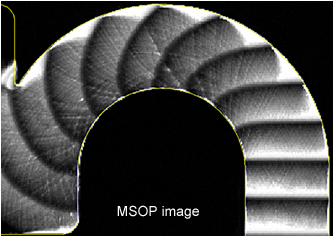“Initiation and Stabilization of a Conical Oblique Detonation Wave by a Projectile”

When a projectile is launched with a supersonic velocity into an detonable mixture, the mixture is compressed by a shock wave around the projectile, and chemical reactions, so called “shock-induced combustion”, take place. In general, the shock wave and reactions are not coupled, and the chemical reactions are quenched far from the projectile where the shock wave is sufficiently decayed. On the other hand, the chemical reactions are coupled with the precursor shock wave if a detonability of the mixture (depends on a mixture’s composition, initial pressure and temperature) is sufficiently high, and this leads a detonation initiation. A detonation wave is characterized by its self-sustained propagation, that is, once a detonation wave is initiated, it can propagate without a support from boundaries. When a projectile fries faster than a propagation velocity of detonation wave (called “Chapman-Jouget velocity”, eigen-value of a mixture and typically Mach 5 to 7), a conical oblique detonation wave is stabilized around a projectile. The oblique detonation wave and shock-induced combustion are attractive phenomena which can complete a combustion process within a short distance in a hypersonic mixture flow such as in a combustor of hypersonic propulsion system.
We are operating a ballistic-range (two stage light-gas gun) which can launch a projectile with a speed of 2 to 3 kilometers a second. Oblique detonation waves and shock-induced combustion phenomena are visualized with high-time and high-spatial resolutions using a Schlieren / Shadowgraph system and high-speed camera. We are trying to reveal critical conditions for a stabilization of conical oblique detonation waves focusing local conditions on a wave (e.g. propagation velocities, curvature radiuses and mixture’s detonability).
Research and Development of a Valve System for Pulse Detonation Engine

A pulse detonation engine (PDE) using a high energy of a detonation wave has a high performance in a wide range of the flight speed, and it is hoped that a PDE is put to practical use as an environment-adaptive high-efficiency internal-combustion engine. An intermittent flow generation valve to supply propellant and purge gas in a combustor is necessary to generate a detonation wave intermittently. To obtained higher performance than a conventional constant-pressure engine, one of the biggest challenges for a PDE is to develop a PDE-optimized valve.
The study on the valve system has been carried out through both gaining an understanding of micro-time-scale phenomena by the visualization experiment in a combustor and the evaluation of the macro-time-scale engineering performance by thrust merriments.
Stable Propagation of a Curved Cellular Detonation Wave (CCDW) in a Curved Channel

The front shock behavior of a curved cellular detonation wave (CCDW) propagating stably through a 2-D curved channel is being investigated. In the present study, we developed a new visualization method named multi-frame short-time open-shutter photography (MSOP). The front shock shape and cell structure of the detonation wave can be simultaneously visualized by using MSOP. The experimental results show that is the maintenance of detonation cell structure is required in order to stabilize the CCDW in a curved channel. The relation of normal detonation speed and local curvature of the detonation wave is also being studied. This so-called Dn-k relation is not influenced by the inner radius of curvature of curved channel, and the variation in the front shock shape of the CCDW can be successfully reconstructed by using the Dn-k relation.


contact: kasahara(@)kz.tsukuba.ac.jp



